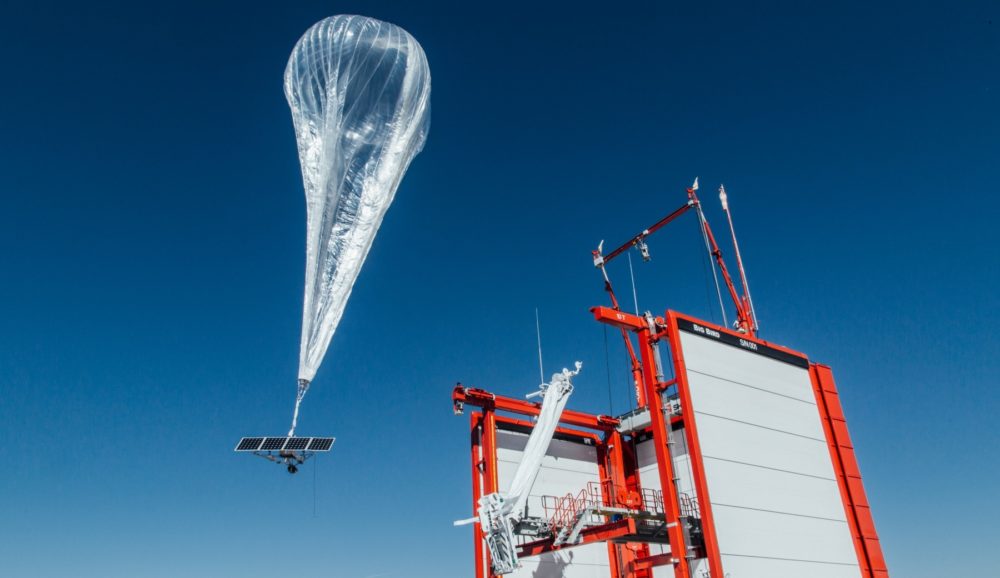The federal government has long excelled at identifying private sector best practices to deliver new services to USG constituents, increase efficiency, and improve operational effectiveness. It is often a topic of discussion at most government and military conferences – what is working in the private sector that can be implemented to make the government work better.
When it comes to innovative uses of satellites, the answer to that question could come from looking at two examples: Alphabet’s X and Royal Caribbean Cruise Lines.
A recent article from FierceWireless profiled two very innovative implementations of a next generation satellite technology – Medium Earth Orbit (MEO) satellite constellations. These satellites orbit much closer to Earth, drastically cutting latency, the time required for the signal to travel to and from the satellite. They also utilize steerable spot beams that enable real time pointing to global hot spots, frequency reuse, and significantly higher throughputs.
Both implementations – one by Alphabet’s X and the second by Royal Caribbean Cruise Lines – are exciting due to their ability to deliver capabilities that could be very attractive to federal government agencies and the United States military. Let us look at both individually, starting with the implementation from Alphabet’s X.
Project Loon Brings Connectivity to the Marooned
In late September, a category five hurricane called Hurricane Maria ripped into Dominica and Puerto Rico. More than two months later, Puerto Rico had not yet recovered, with power and other essential services still not available to many of its residents. In fact, as many as 100,000 people may have left the island for the mainland as a result of the destruction of cell towers, roads, and basic infrastructure.
In an effort to give connectivity back to the residents of Puerto Rico, and to help connect rescue workers and emergency personnel, Alphabet’s X rolled out one of their more innovative programs – one that was truly full of hot air – Project Loon.
For those that may not be familiar, Alphabet’s X is a self-described, Moonshot Factory. The organization looks at challenges and comes up with innovative ways to address them using new technologies – or new approaches and implementations for existing technologies. Project Loon is one of their solutions, which utilizes extremely high-altitude balloons to deliver cellular connectivity with MEO backhaul to unconnected areas. Here is a great video primer on the project:
What role did satellite play in Project Loon? Rapid deployment of MEO satellite assets provided mobile backhaul, effectively connecting the balloons from Project Loon to the Internet. This delivered reliable, high-performance connectivity to Puerto Ricans whose lives had been devastated by Hurricane Maria and who had limited means of communication.
X Marks the Spot for the Government
The use of Project Loon following Hurricane Maria illustrates MEO satellite’s ability to deliver timely resources to assist with communications following natural disasters – even on islands and other remote locations.
This is a service model that can be replicated for local, regional and national interests for both commercial and government rapid response.
U.S. and world government bodies can leverage these resources for natural disaster response, emergency management, border patrol infrastructure, robust fiber-like backhaul communications, and austere site connectivity for terrestrial, maritime, and airborne platforms.
Imagine being able to deliver fiber-like connectivity practically anywhere on the planet, even if terrestrial networks are unavailable, or if they have been compromised due to a terrorist attack, natural disaster or other event.
With governments, emergency response organizations, and military organizations increasingly relying on connected platforms and devices for essential capabilities and communications, MEO satellites can play an essential role in making these mission-critical applications available, even when networks are not available.
The Royal Treatment on the High Seas
The second satellite implementation that FierceWireless discussed was being utilized by Royal Caribbean Cruise Lines. Utilizing MEO satellites, Royal Caribbean was delivering fiber-like connectivity to its crew and guests, ensuring that they had the same connectivity on the high seas that they enjoyed when their feet were on solid ground.
This makes sense for a commercial cruise line trying to ensure that customers – especially younger generations hopelessly addicted to connected applications and devices – are having a good time. But here, too, is a use of MEO satellites that the military can learn from and adopt.
Royal Caribbean and other cruise lines are not the only organizations operating large boats with thousands of people on them. Something very similar is done – for very different reasons – by our military, including the Navy and Marine Corps.
As my colleague, Paul Damphousse, recently told the Government Satellite Report when asked about the bandwidth requirements of the Navy, “…the requirements for throughput by themselves are increasing. That has a lot to do with where technology is going in general, where the demands of our naval leaders are going and where our required capabilities are going.”
That increasing bandwidth demand can be filled by MEO satellites, much in the same way they are being used by Royal Caribbean.
A shared connection that can deliver more than 1 Gbps of throughput delivered at sea – or on land – is readily applicable to the federal government and military. This level of throughput and bandwidth could be used to connect carrier-size maritime and aviation platforms, as well as large bandwidth single-users.
There is an overwhelming movement across the federal government to embrace connected platforms and devices – while the government continues to increasingly rely on IT capabilities and applications to accomplish their missions. MEO satellites are being used effectively in the public sector – in implementations like Project Loon and by Royal Caribbean – to deliver fiber-like connectivity where it is needed. I encourage the government to look to these implementations for inspiration, and to consider existing commercial capabilities as they work to identify their requirements for critical mission connectivity.
MEO and HTS constellations are capable of delivering fiber-like bandwidth to practically anywhere on the planet. For additional information of these solutions, download the following resources:
